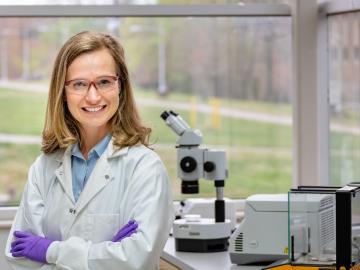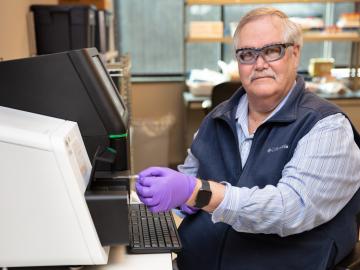Filter News
Area of Research
- (-) Advanced Manufacturing (4)
- (-) Biology and Environment (3)
- Building Technologies (1)
- Clean Energy (32)
- Climate and Environmental Systems (1)
- Computational Engineering (1)
- Computer Science (6)
- Fusion Energy (4)
- Materials (23)
- National Security (2)
- Neutron Science (9)
- Nuclear Science and Technology (9)
- Quantum information Science (2)
- Supercomputing (8)
- Transportation Systems (1)
Media Contacts

Researchers at Oak Ridge National Laboratory demonstrated that an additively manufactured polymer layer, when applied to carbon fiber reinforced plastic, or CFRP, can serve as an effective protector against aircraft lightning strikes.

As a computational hydrologist at Oak Ridge National Laboratory, Ethan Coon combines his talent for math with his love of coding to solve big science questions about water quality, water availability for energy production, climate change, and the

A team including Oak Ridge National Laboratory and University of Tennessee researchers demonstrated a novel 3D printing approach called Z-pinning that can increase the material’s strength and toughness by more than three and a half times compared to conventional additive manufacturing processes.

Using additive manufacturing, scientists experimenting with tungsten at Oak Ridge National Laboratory hope to unlock new potential of the high-performance heat-transferring material used to protect components from the plasma inside a fusion reactor. Fusion requires hydrogen isotopes to reach millions of degrees.

Amber McBride is using her expertise in nanotechnology, drug delivery, and disease models to research fundamental challenges in human health in the ORNL Biosciences Division.

A novel additive manufacturing method developed by researchers at Oak Ridge National Laboratory could be a promising alternative for low-cost, high-quality production of large-scale metal parts with less material waste.





